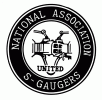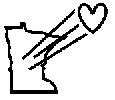

FAQ's - Gauge vs Scale
Rev. Nov. 21, 2001
| FAQ's: | ||||
| Lake Wobegone | Scale | Gauge vs Scale | Switch vs Turnout | Vehicle Size |
Question: Is there any difference between the terms Gauge and Scale?
Answer: Yes there is! I have found several good links on this topic.
Links 1
and 4
provide EXCELLENT descriptions of the difference.
Link
2 has an intriguing conversion chart.
Link 3 shows
drawings of a reefer in different scales.
In summary, gauge is the distance between the rails. Scale is the size of our models relative to the real world. In the real world, most railroads are standard gauge; meaning that the distance between the rails is 4' - 8 1/2". There are of course many narrow gauge and a few wide gauge railroads, whose distance between the rails differs from standard gauge. These real world railroads are obviously all of the same scale, 1:1; so you can see that Scale and Gauge are independent terms. A good illustration of this in model railroading is Garden railroading using G gauge track. Some G gauge trains are models of standard gauge trains. Other G gauge trains are models of narrow gauge trains. Therefore, for them to all operate on G gauge track, they must be of different scales. People operating these trains are G-gaugers, because they all use G gauge track.
In S scale however, all trains are of the same scale, 1:64th the size of real world trains. This includes AF, hi-rail, scale model trains, and narrow gauge trains. Instead of all these trains operating on the same gauge track, models of S scale standard gauge trains operate on track with a rail spacing of 0.883 inch (distance between the rails), and S scale narrow gauge trains operate on narrower track. The 0.883 inch rail spacing used by the standard gauge trains is known as S gauge. S scale narrow gauge trains do NOT operate on S gauge track, and the operators are NOT S-gaugers..
Conclusion: Since "scale" refers to the size of the trains, American Flyer trains and all other 1/64th scale trains are "S scale" trains. I know that this sounds awkward to some due to the longstanding usage of "S gauge". Did this start with A.C. Gilbert calling his trains S gauge? He was correct of course, since AF trains are all S scale models of standard gauge trains and therefore use S gauge track, but I think we benefit ourselves to start using more accurate terminology; see next question.
Question: Why does it make any difference what we call ourselves?
Answer: Many of us desire to promote S scale
to other model railroaders AND to those who are not YET model railroaders.
I believe we damage our credibility with other modelers when we use terminology
that is different and less accurate than what they use. For newcomers,
I believe it is confusing when we use terminology that is different and
less accurate than what modelers in other scales use. YES, I believe
it DOES make a difference.
![]()